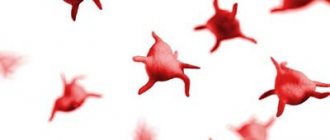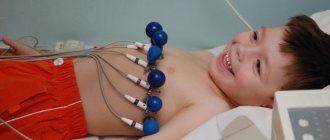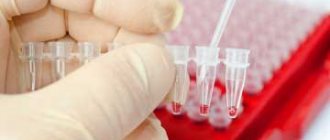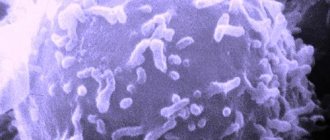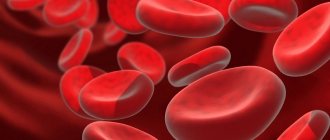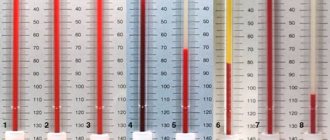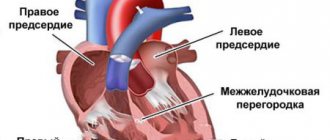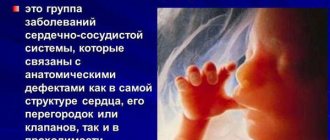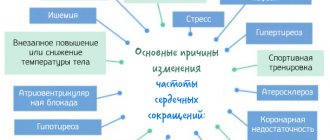The pulse is a jerky periodic oscillation of the walls of the arteries, which is caused by heart contractions.
The normal pulse rate in children is primarily determined by the age of the child: the older he is, the lower the heart rate. In addition to age, the pulse rate depends on the general health of the child or adolescent, the fitness of the body, body temperature and the environment, the conditions in which the count is made, as well as many other factors. This is explained by the fact that by changing the frequency of contractions, the heart helps the child’s body adapt to changes in the internal or external environment.
Not only medical workers, but also parents should know how much the pulse is normal and be able to count it. After all, the nature of the pulse allows you to assess the state of the child’s cardiovascular system.
Normal heart rate in children
In children and adolescents, the normal heart rate differs from this indicator in adults. A child's normal heart rate can be determined using this table:
| Child's age | Normal limits (beats per minute) | Average (beats per minute) |
| From 0 to 1 month | 110 — 170 | 140 |
| From 1 to 12 months | 102 — 162 | 132 |
| From 1 to 2 years | 94 — 154 | 124 |
| From 2 to 4 years | 90 — 140 | 115 |
| From 4 to 6 years | 86 — 126 | 106 |
| From 6 to 8 years | 78 — 126 | 98 |
| From 8 to 10 years | 68 — 108 | 88 |
| From 10 to 12 years | 60 — 100 | 80 |
| From 12 to 15 years | 55 — 95 | 75 |
The normal heart rate for adolescents 15 years of age and older averages 70 beats per minute (range 60 to 80 beats per minute).
Pulse in children by age: table of norms from 0 to 18 years - features and what affects the indicators
The heart rate in children is mainly determined by age, well-being, air temperature, and the environment in which the count is performed. The walls of the arteries contract with impulses, which leads to the appearance of beats (pulse). As children grow older, their heart rate (heart rate) decreases .
In the fetus
You can notice fluctuations in the baby’s heart at the beginning of the first trimester; the rhythm is rapid and changes with the development of the fetus. Pulse at 6–8 weeks is 110–130 beats, from 8 to 11 it reaches 190, from 11 weeks – 140–160, varies several times a day.
In newborns
- The heart rate of a baby (the first 4 weeks after birth) with anxiety increases to 160–200 beats.
- 120–140 beats is normal.
- Children born prematurely have a higher heart rate than a child born at full term.
In infants
A baby is considered a child from 30 days to 1 year. By the age of one year, the baby’s normal heart rate is 132 beats. Normally, the heart rate in children increases to 162.
In young years
In a child under 7 years of age, the nervous system is at a stage of intensive development, which is the reason for the increase in heart rate in children. For a 2-year-old child, the normal heart rate is 124 beats; physical activity or stress leads to a frequency of 94 to 154 beats.
In preschoolers
The age of preschoolers is conventionally divided into three periods:
- junior preschool age - from 3 to 4 years;
- average preschool age - from 4 to 5 years;
- senior preschool age - from 6 to 7 years.
The normal pulse rate for 6-year-old children, as can be seen from the table, is 106 beats.
The heart rate of school-age children is 80–120 beats.
In children 9–10 years old, the normal heart rate is considered to be 108 beats per minute.
In teenagers
Pulse rates in adolescents gradually drop to 65–100 beats, and upon reaching puberty they reach 60–90 beats. The teenager's heart rate is normal - 75
Pivot table
| Age | Minimum (bpm) | Average value (bpm) | Maximum (bpm) | |
| In newborns | Up to a month | 110 | 140 | 170 |
| In infants | From 1 month to a year | 102 | 132 | 162 |
| In young years | 1–2 years | 94 | 124 | 154 |
| In preschoolers (younger preschool age) | 3–4 | 90 | 110 | 130 |
| For preschoolers (middle and senior preschool age) | 5–6 | 86 | 106 | 126 |
| For schoolchildren | 7–8 | 78 | 98 | 118 |
| 9–10 | 68 | 88 | 108 | |
| 11–12 | 65 | 82 | 100 | |
| In teenagers | 13–15 | 63 | 79 | 95 |
| 16–18 | 60 | 75 | 90 |
Skipping or extra beats in the pulse indicate heart disease.
How to calculate heart rate?
Children's pulse measurements are taken after eating and in a ventilated room. Before starting to count the heartbeat, wait until the child calms down and put him in bed with his arm extended, palm up. In children, the pulse is measured at the radial artery.
Using the tips of 2, 3, 4 fingers, feel the artery and gently press it. Count your heartbeats in 60 seconds. To clearly understand the child’s heart rate, repeated measurements are taken. During deep sleep, children's heart rate is minimal and reaches its maximum value at approximately 10–12 o'clock.
Do not put too much pressure on the carotid artery, as this will lead to dizziness.
What influences the indicators?
Factors influencing heart rate indicators:
Age
The heart rate decreases as the child gets older. When a baby is born, the heart beats approximately 120 times per minute. Children have a heart rate of 100 beats. In people under 65 years of age, the heart rate should be 70–80. People over 65 years old have a heart rate of 60.
Physical activity
During physical exercise, the human body's organs work intensively, which is facilitated by an increase in oxygen consumption. The supply of oxygen to muscle cells forces blood flow and heart rate to increase.
Health status
Children's heartbeat is negatively affected by: negative emotions, digestive problems and feelings of fear. Deviation of a person's weight from the norm leads to a change in heart rate.
Medicines
Drugs that patients use to prevent or treat blood pressure narrow or dilate the blood vessels of the heart, thereby increasing or decreasing the heart rate.
Why does your heart rate change with age?
The human heart, like any muscle, grows (aging) as we grow older and loses the elasticity of the blood vessels of the circulatory system. The total length of human blood capillaries reaches 100,000 km; waste and toxins constantly accumulate in them.
Reasons why heartbeat changes over the years:
- ineffectiveness of the heart muscle;
- decreased elasticity of blood vessels;
- increased sensitivity to adrenaline (the fear hormone).
These factors lead to a decrease in the volume of blood ejected by the heart and a decrease in heart rate.
Symptoms and causes of low readings
Low heart rate (bradycardia) in children can be acquired or congenital. The disease is diagnosed:
- in newborns with a pulse less than 100 beats per minute;
- in children 1–6 years old: 79–80;
- in school age: less than 60 beats.
Symptoms:
- weakness;
- profuse sweating;
- instability
- loss of consciousness;
- loss of appetite;
- the appearance of shortness of breath.
Accurate identification of the cause of the disease guarantees effective treatment.
The causes of low blood pressure may be:
- systematic fasting;
- hypothermia;
- infectious diseases;
- poisoning of various types.
Diseases directly related to the work of the heart (atherosclerosis, hypotension, myocardial infarction, endocarditis) also help reduce the patient’s blood pressure.
If your heart rate is below 50 beats/min, contact your doctor immediately.
Symptoms and causes of high readings
A high heart rate (tachycardia) is considered normal in children under 7 years of age.
An increase in the child's body temperature by 1 degree increases the pulse by 7-12 beats.
Symptoms:
- painful tremors in the chest area;
- numbness of fingertips;
- feeling of fainting;
- blurred vision;
- cold extremities;
- general weakness.
Causes:
- thyroid dysfunction;
- pathology of the upper chamber of the heart;
- lung disease.
Coffee, tobacco, tea, lack of vitamins, nervousness, fear, rich foods also stimulate an increase in heart rate
And also read: what to do with a rapid pulse at low, normal and high blood pressure?
Slow heart rate in a child
A decrease in the number of heartbeats is called bradycardia. Bradycardia is not always a sign of any disease. It is often observed in children and adolescents who are actively involved in sports. Bradycardia against the background of good general health indicates good fitness of the child’s body in general and its cardiovascular and respiratory systems in particular.
If a child’s bradycardia is accompanied by rapid fatigue, weakness, dizziness, pale skin, and decreased blood pressure, then you should immediately consult a doctor.
Causes of low heart rate
A low heart rate is called bradycardia. Physiological reasons include the training of the heart muscle, hypothermia of the body, and the time immediately after waking up. But bradycardia can also be caused by serious pathologies of the cardiovascular system:
- atherosclerosis;
- myocardial infarction and subsequent scar changes;
- low blood pressure;
- myocarditis;
- endocarditis.
Also, a low pulse is often caused by non-cardiac pathologies. The following diseases can reduce heart rate:
- hypothyroidism;
- metabolic disorders;
- excess dose of cardiac glycosides;
- vegetative-vascular dystonia;
- exhaustion of the body;
- lead poisoning.
A low pulse of any etiology poses a great danger to the baby’s health. When the rate is less than 40 beats per minute, the brain begins to suffer from a lack of oxygen. This condition is manifested by weakness, dizziness and fainting. When the heart rate decreases to lower levels, the child may experience cardiac arrest.
That is why regular attacks of bradycardia require mandatory medical intervention. The child must undergo a thorough examination, including an ECG, ultrasound of the heart, and blood tests to identify non-cardiac pathologies.
Did you like the article? Save it!
Still have questions? Ask them in the comments! Cardiologist Mariam Harutyunyan will answer them.
Ivan Grekhov
Graduated from the Ural State Medical University with a degree in General Medicine. General practitioner
Normal heart rate in a teenager when playing sports
Teenagers should be able to monitor their health during training. One of the methods of such self-control is counting your pulse before starting a workout and after it ends.
When counting your pulse, you should pay attention not only to the frequency of the beats, but also to their rhythm. There is a direct relationship between physical activity and heart rate, i.e. the higher the load, the faster the heart rate.
When playing sports, it is unacceptable for the pulse to exceed the value determined by the formula: X = 220 - the age of the athlete.
At the same time, the normal heart rate during running and other types of training should be restored in the young athlete within 10 minutes after stopping the load. If this does not happen, then the training regimen should be revised and physical activity reduced.
When training, it is important to know not only the upper, but also the lower limit of the heart rate, because if at the end of the lesson the pulse is below this value, this means that the load was insufficient and it can be increased.
The minimum heart rate during training can be calculated using the formula:
X = ((220 - y) - z) * 0.5 + z, where Y is the athlete’s age; Z - Heart rate before the start of the workout for one minute.
This method of determining the lower limit of heart rate during training is called the Karvonen method.
moeserdtse.ru
Heartbeat and Pulse: What's the Difference?
Let me first understand the concepts that ordinary people often confuse or do not distinguish between each other. In particular, many are interested: are heartbeat, pulse and heart rate the same thing?
In short, yes. The norms for these indicators coincide, so in everyday life they are not differentiated. But in essence there is some difference.
When we talk about heartbeat, we usually mean heart rate (HR), that is, the frequency with which the heart contracts, or the number of such contractions per minute.
In medicine, a heartbeat is understood not as the fact of a heartbeat, but as a person’s physical sensation of it, that is, heartbeats so strong that a person feels them.
Since it is not very convenient to calculate heart rate, to determine it we usually count the pulse, because both of these indicators normally have the same values. When the heart contracts, it pushes a portion of blood into the bloodstream. This blood flow forces the walls of blood vessels to dilate at the moment of cardiac impulse. If we put our fingers on the arteries that run close to the surface of the skin, we can feel these expansion impulses, which are the pulse.
Thus, whether we talk about a pulse or a heartbeat, we usually mean the same thing. It should be noted that pulse is not a constant value. It is a compensatory mechanism, that is, by increasing and slowing down the heart rate, the body is able to adapt to changes changing internally or externally. So, say, in a hot room, when you are scared, or during physical activity, your heart rate increases. In children, indicators can exceed the norm by two or even three times, but such conditions are not pathological.
How to measure a child's pulse correctly
There are many “points” on the human body where the pulse can be clearly felt. Among them are the femoral, posterior tibial, brachial artery, abdominal, dorsal arteries and others. You can simply place your hand on the heart area and count the number of perceptible beats.
Adults often measure their pulse in the area of the basilar artery (behind the ear), the superficial temporal artery (in the temple area), and the facial artery (under the lower jaw on the side).
To measure heart rate in children, two places are most often chosen:
- Carotid artery (located in the neck) - this method is recommended to measure the heartbeat in particular in a one-year-old child, since this method is considered more accurate. Using your index and middle finger, feel the pulsating artery in the child’s neck and count the number of pulsating beats over 15 or 30 seconds.
- On the wrist: measurements are taken in exactly the same way, only the artery must be felt on the wrist at the base of the thumb (the child’s hand is palm up). In this case, it is more convenient to press it with the thumb of the opposite hand (but you can also use the index and middle fingers, as in the previous case).
Often, to determine the heartbeat in newborns, mothers simply place their hand on the chest in the area of the heart and count the number of its beats per minute.
When determining heart rate or pulse, the number of beats per minute is counted. But usually the count is made for 15 or 30 seconds, and then the result is multiplied by 4 or 2 (respectively). The second option (30 seconds) is more preferable and accurate, especially when measuring the heartbeat of a child under one year old. If the heart rhythm is uneven, uneven, the heart beats arrhythmically, then the count must be made within the prescribed 60 seconds.
It is clear that you should prepare a timer (stopwatch or watch with a second hand) in advance, by which you will time the time.
What affects a child's heartbeat?
But besides this, where, how, when and under what conditions the measurement is made is of great importance. Because heart rates in children can be influenced by a huge number of factors:
- age,
- body mass,
- body position at the time of measurement,
- Times of Day,
- temperature regime of the internal (i.e. body) and environment (cold or heat),
- eating,
- balance of vitamins and microelements in the body,
- level of physical fitness,
- physical condition (presence/absence of physical activity, whether the child is sick or healthy),
- emotional state (presence of stress, strong positive or negative emotions),
- state of the endocrine system and other organs,
- taking certain medications
- exposure to toxins, etc., etc.
In order for the indicators to be as accurate as possible, it is necessary to make several measurements, which can be used as a reference in the future. Moreover, each time it is advisable to measure the child’s pulse at the same time of day, in the same body position.
It is considered optimal to take measurements after the child wakes up (in the morning or after a nap), while he has not yet gotten out of bed. The lying position is more preferable than the others.
Please note that if the child is sick (for example, he has a fever) or is “not in the mood,” then the pulse will most likely be elevated. The heart rate largely depends on the demands that are provided to our body (the range of these capabilities in the human heart is quite wide). Consequently, after stress, active games and sports, eating, under stress, and so on, the heart begins to beat faster. That is, the child must be calm and in a good mood before taking pulse measurements.
And even if you did everything according to the rules, do not rush to draw premature conclusions about the results obtained.
Heartbeat in children: normal
The very first thing we need to understand for ourselves: in children, heart rate norms differ significantly from those in adults. Only by adolescence (ages 13-15) does this figure begin to level out and approach the “adult” norm. And the younger the child, the higher the heart rate norms for him. Thus, the heart rate of an infant at rest is much higher than that of a teenager.
Pulse rate in children: table
The table shows the limit values that are considered normal for children of different age categories. But we can talk about violations and deviations from the norms only if the child’s heart rate indicators differ from the limit norms by more than 20%, and only a doctor has the right to judge this. Moreover, according to various health authorities, the maximum heart rate limits for children may differ.
If your baby’s heartbeat in a state of complete health and calm greatly exceeds generally accepted norms or is significantly lower than these norms, then you definitely need to show the child to a doctor to rule out the presence of any problems in his health.
Causes of heart rhythm disturbances
Bradycardia
Types of disorders include tachycardia (increased contractions) and bradycardia (infrequent contractions).
Tachycardia in children is usually caused by:
- increased temperature due to illness;
- hormonal changes;
- vegetative disorders;
- anemic conditions;
- dehydration;
- serious heart problems.
Bradycardia is provoked by:
- some infections;
- hormonal insufficiency;
- congenital heart defects;
- electrolyte disturbances of water-salt metabolism;
- acute poisoning;
- brain diseases.
The pulse is the most important initial marker for diagnosing various health conditions in a child. The task of parents is, if there are objective reasons for concern, namely the results of diagnostic studies, to try, with the help of a doctor, to eliminate the problem as quickly as possible.
If heart rate indicators constantly exceed their norm by more than 20 percent, then this process in the medical industry is called tachycardia. Such an ailment may indicate the following shortcomings:
- anemia;
- thyrotoxicosis;
- various diseases from the cardiovascular system;
- diseases of infectious etiology;
- various pathologies of the pulmonary type;
- dystonia of vegetative-vascular type.
The heart absolutely always begins to increase its rhythm when exposed to physical activity. It is important to understand that the greater the impact of physical activity on the body, the more the pulse in the body increases.
It is important to know that even if in this case the heart rate parameters are too high than normal, then the sport you have chosen absolutely does not correspond to your capabilities.
Under normal conditions, after exercise, the heart rate should return to its constant rate in no more than five minutes.
If the heart rate is too high, the following factors may occur:
- shocks in the chest of a strong type, but at the same time they do not cause any pain;
- the person himself feels that his heart rate has seriously increased;
- dizzy and headache;
- it starts to get dark in the eyes;
- noise in ears.
Low performance
Rapid heartbeat in children
An accelerated heart rate is called tachycardia. Like the opposite phenomenon (slowing the rhythm), it is not a separate disease, but rather a consequence of some disturbances in the body. There can be many such reasons, and additional examination of the child will be required to identify them.
In particular, tachycardia in children can accompany the following pathological conditions: endocrine, cardiovascular diseases, anemia, potassium or calcium deficiency, infectious and inflammatory processes (more precisely, the accompanying fever), difficulties in the functioning of the respiratory system, chronic fatigue, increased intracranial pressure, etc. But you should also know that tachycardia in preschool children is a physiological norm.
Meanwhile, acute attacks of tachycardia occur when the child’s well-being sharply deteriorates (often preceded by physical exertion or emotional shock). They can last from several minutes to several hours, repeating again after a short break. Against the background of this condition (called paroxysmal tachycardia or paroxysm), pain in the heart, shortness of breath, cough, vomiting, fever and chills, increased urination, and convulsions may be observed. In this case, you should definitely call a doctor, and as first emergency aid (if it is not possible to go to a medical facility), you can give the child Corvalol, tincture of valerian or peony:
- Place the baby on the bed.
- Provide access to fresh air flow (free your neck from clothes, open a window).
- Apply a cold compress to the forehead (but this action does not apply to a newborn).
- Give him water or medicine.
- Calm down (hug, switch his attention to something, and at the same time be sure to be calm yourself).
This condition is not so much dangerous as it is frightening. However, under no circumstances should it be left unattended: it requires emergency assistance and is a reason for mandatory examination of the child.
nashidetki.net
The heart is rightfully considered one of the most important human organs. Of course, this is a convention, because every organ is vital. But in this article we will talk specifically about the heart, or more precisely, about its contractions.
Heart contractions caused by the work of this organ cause vibrations in the walls of the arteries. These shocks, which occur at regular intervals, are called pulses. And the pulse is characterized by the frequency of heart contractions. The normal heart rate (HR) in children is a relative concept. It depends mainly on age. Heart rate decreases with age, that is, the younger the baby, the faster his heart beats, and, consequently, the pulse faster. For example, the heart rate in children under one year of age fluctuates between 130-140 beats, and in fifteen-year-old adolescents - no higher than 75-80.
Heart rate also depends on such indicators as health status, air and body temperature, degree of activity, time of day and other aspects. This feature is associated with the need for the child to adapt to his environment. Thus, during sleep, children’s heart rate is slightly lower than during the day when they are awake. In addition to heart rate, respiratory rate (respiratory rate) is also an important indicator in children. It is these indicators that allow doctors to monitor the condition of the body. As for the normal respiratory rate, it is 60 times per minute in newborns, and about 25 times per minute in adults.
Pulse counting
The skill of counting the pulse is useful for parents, because it allows you to assess the state of the child’s cardiovascular system at home. All you need to have for this is a watch that has a second hand (ideally a stopwatch). So, let's start measuring. If the child is an infant, then heart rate should be measured on the temporal or carotid artery. Measuring the pulse on the radial artery is convenient in older children. Record the time by pressing your finger tightly to the artery and count the number of shocks. There is no need to wait until exactly one minute has passed. Fifteen seconds is enough. Then multiply the number of strokes by four, and compare the result with the indicators given in the table above. But there is one caveat. If you know that your baby has an arrhythmia, then it is better to take measurements within a minute.
Increased heart rate
If the heart rate in children exceeds the table value by more than 20%, then we can talk about a phenomenon such as tachycardia. This condition can be a consequence of anemia, that is, low hemoglobin levels in the blood, excessive physical exertion, emotional stress, fatigue and high body temperature. But a child's rapid heartbeat may indicate more serious problems. Thus, an increased heart rate is a signal of an endocrine disorder, diseases of the respiratory system and heart.
Slow heart rate
Unlike a fast heartbeat, a slow heartbeat in a child does not indicate that he is sick. This condition is called bradycardia. A similar condition is often observed in those children who are actively involved in any kind of sport. If a slow pulse accompanies excellent health and the absence of health problems, then this indicates good physical fitness of the child. His cardiovascular and respiratory systems are working as expected. But with rapid fatigue, frequent dizziness, weakness, pale skin and low blood pressure, slowing the pulse cannot be considered safe. This manifestation of bradycardia is a reason to consult a doctor. It is likely that the child will have to undergo a course of medication.
www.my-sunshine.ru
Heart rate norms in children
Normal heart rate values in childhood differ significantly from those in adults. The heartbeat in children has its own characteristics and varies at different ages.
The average heart rate values for children by age are presented in the table below.
| Age | Average normal heart rate in beats per minute |
| first month of life | 110-170 |
| from 1 month to a year | 102-162 |
| from one to two years | 94-154 |
| from 2 to 4 years | 90-140 |
| from 4 to 6 years | 86-126 |
| from 6 to 8 years | 78-118 |
| from 8 to 10 years | 68-108 |
| from 10 to 12 years | 60-100 |
| from 12 to 15 years | 55-95 |
General information
The general condition directly depends on the proper functioning of the heart.
Important characteristics of the latter are beat frequency and pulse strength. The normal heart rate is not the same for people of all ages. Even in childhood, these indicators are different for infants, kindergarteners and schoolchildren.
It should be noted that heart rate is a variable value and largely depends not only on the age of the child, but also on factors. For example, the pulse is influenced by physical activity, emotional mood, natural phenomena and the presence/absence of pathological processes in the body.
Deviations from the norm
If your pulse is too fast
If the heart rate exceeds the norm, the reasons may be as follows:
- hot weather;
- exercise stress;
- stressful situation.
In these cases, the pulse may increase three times, but this is not a pathology. A child may have a rapid heartbeat even at rest. Main reasons:
- prostration;
- overwork;
- heart diseases;
- endocrine diseases;
- respiratory diseases;
- anemia;
- infectious lesions.
If the pulse is too low
If you feel normal and no pathologies are found, a rare pulse indicates good training.
But bradycardia can be associated with pathologies and be accompanied by unpleasant symptoms. If your baby complains of dizziness, weakness, loss of strength, and has high or low blood pressure, you need to show him to a doctor as soon as possible.
What to pay attention to
If your child plays sports, you need to monitor your heart rate during exercise. It is important that during training the heart rate does not exceed the maximum permissible values, which are calculated using the formula: 220 minus age.
You should know that the heart rate should return to normal within ten minutes after stopping the exercise.
If the heart rate value is below this limit, the load can be increased.
Heart rate and respiratory rate in people
As the child grows older, the ratio of respiratory rate and heart rate should approach the norm of an adult. These indicators help to calculate the intensity of physical and moral stress on the child. For adults, standards also vary depending on the level of physical activity. Athletes have a lower heart rate than people who are not involved in sports.
What are heart rate and respiratory rate?
Heart rate is a count of the number of times the heart beats per minute. Respiratory rate is the number of inhalations and exhalations per minute. These indicators make it possible to determine how deep and rhythmic breathing is, as well as the ability to analyze the performance of the chest. Heartbeat characteristics differ during different periods of growth.
Table by age for children: norms
Pulse studies have shown that in newborns it is 140 beats per minute. The pulse rate in children in the first 12 months of life decreases to 110-130, and over 12 years of age the pulse rate reaches approximately the adult norm.
The norm of respiratory rate in children is important for assessing the condition of the respiratory tract, heart, circulatory system and health in general. The ratio of respiratory rate to heart rate is the respiratory-pulse coefficient in infants 1:2.5, in children under 12 months - 1:3, older - 1:4.
The following table presents the norms of respiratory rate and heart rate in children by age.
| Age | Heart rate | NPV |
| Baby | 100—160 | 40—60 |
| Up to 1 month | 140—160 | 40—50 |
| Up to 6 months | 130—135 | 35—40 |
| 1 year | 110—130 | 30—40 |
| 2 years | 110—115 | 30—35 |
| 3 years | 105—110 | 20—35 |
| 4 years | 100—105 | 20—30 |
| 5-6 years | 80—100 | 20—25 |
| 7-8 years | 80—85 | 18—25 |
| 10-12 years | 75—80 | 18—20 |
| Over 12 years old | 70—75 | 16—20 |
Measuring heart rate and respiratory rate
How to measure your pulse:
- Grab your wrist in the pulse detection area.
- Start the stopwatch.
- Count the number of heartbeats per minute.
Technique for counting breathing in children (inhale-exhale):
- Distract the child.
- Place your hand on your stomach or take your hand.
- Count the number of cycles in 1 minute.
- Evaluate the result.
To calculate the heart rate, the baby must take a stationary position. Measurements should not be taken after various physical or emotional stress, as the heart rate increases.
After this, it is worth determining whether the results correspond to the norm. Normally, the pulsation is rhythmic and clear. The counting technique is used for different ages. The breathing rate is measured over a minute.
In children, it is better to count respiratory movements during sleep.
Deviations from the norm
If there is a problem with the cardiovascular system in a child, you should consult a pediatrician.
Do not worry if the baby’s heart rate and respiratory rate differ slightly from the readings of an adult.
And only when you receive data that differs significantly from the norm indicated in the table, you should be examined by a doctor to find out the main cause of the deviations. Rapid shallow breathing is called tachypnea.
An increase in heart rate is called tachycardia, a decrease is called bradycardia.
Rapid breathing
Frequent breathing is an increase in the repetition of respiratory movements, in which its rhythm does not change, and can develop due to gas exchange disorders with the accumulation of carbon dioxide in the blood and a decrease in the amount of oxygen.
As a result, the range of movements during breathing becomes smaller. At times, rapid breathing worsens, which is mistaken for shortness of breath, in which the respiratory rate in children should be more than 60 inhalations and exhalations per minute.
Fast pulse
It is important to monitor your baby’s heart rate both at rest and during physical activity.
The causes of irregularities in heart rate may vary.
This is mainly due to high air temperature, muscle strain and stress. In these cases, the heart rate becomes higher, which is not a pathology.
If the baby’s pulse rate increases in a calm state, then you need to pay attention to this. The main reasons for this condition:
- overwork;
- heart disease;
- respiratory diseases.
Slow heart rate
If a slow pulse is associated with pathologies and is accompanied by unpleasant symptoms, i.e. dizziness, weakness, loss of strength, high or low blood pressure, then bradycardia is highly likely to be diagnosed.
In the absence of pathologies and good health, this indicates that the body is well trained, since athletes have a lower heart rate than other people.
The pulse rate for rational physical activity can be calculated for different ages, namely: heart rate (maximum) = 220 - age (number of full years).
Source: https://EtoDavlenie.ru/puls/chastota-dyhaniya-i-pulsa.html
Measurement algorithm
To carry out the test, you will need a watch with a second hand or a stopwatch. The difficulty in determining the pulse is that it is constantly changing. To measure your heart rate, you need to find an artery in your wrist, temple or neck and lightly press it with your finger. You should feel the blood pulsating under your finger. You need to count the number of shocks in ten or 15 seconds, then multiply the resulting value by six or four, respectively. This determines the pulse, which in most cases is equal to the heart rate. Now you need to compare the resulting figure with the indicators in the table, according to age. You should know that normally the pulsation should be rhythmic and clear.
Measurements must be carried out constantly and preferably at the same time. Doctors advise doing this in the morning, when the child is still in bed in a supine position. You cannot measure your heart rate after active games or emotional stress, when your heart rate increases. In this case, the result will be distorted.
If the data obtained differ significantly from the normal indicators given in the table, you need to consult a doctor to be examined and find out the cause of the deviations.
You can measure heart rate not only manually, but also using special devices that are available in pharmacies.
When do you need a doctor?
If, during systematic observations, a deviation of the heart rate from the age norm is noted, the child must be shown to a doctor for examination.
The specialist will be able to detect the true causes of changes in the pulse and, if necessary, prescribe treatment.
In addition, you should urgently contact a medical facility if the violation in the number of heart beats occurs suddenly, does not normalize on its own, and is accompanied by a sharp deterioration in the child’s well-being.
Quite often, young children less than one month old have a very variable heart rate. It is at this age that indicators of rhythm disturbance are more pronounced than ever before in a person’s life.
In most cases, such processes occur without any consequences in the future. Quite often, so-called cardiac arrhythmias can occur.
You should know that normal heart rate indicators in children at a given age are determined depending on the table. If your child complains to you about shortness of breath, pain in the chest, and at the same time his heartbeat in a calm state is significantly higher, then you should urgently consult a doctor.
